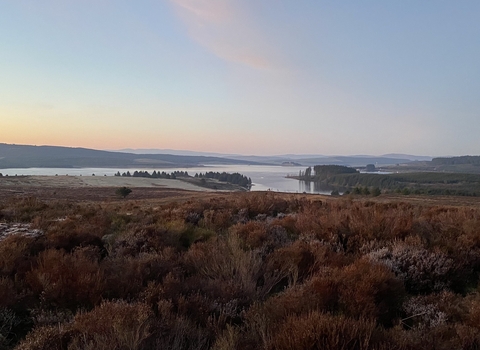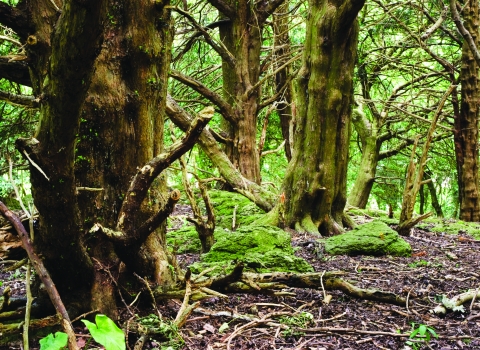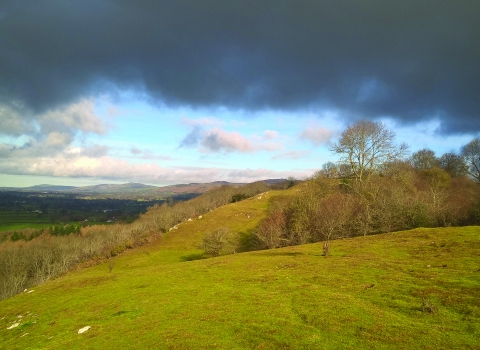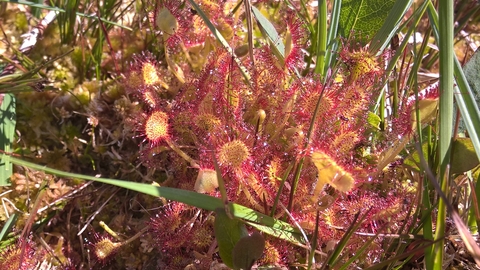
Sundew Credit Chris Wynne

Cors y Sarnau Nature Reserve © Damian Hughes
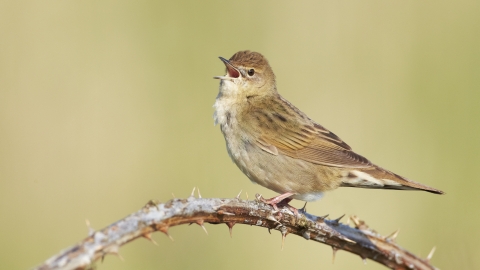
Grasshopper warbler © Richard Steel2020VISION

Sundew © Donald Sutherland

Cors y Sarnau Nature Reserve

© Vaughn Matthews
Bog Asphodel © Philip Precey
Cors-y-Sarnau Nature Reserve
Know before you go
Dogs
When to visit
Opening times
Open at all timesBest time to visit
Spring and summerAbout the reserve
Once a shallow lake, Cors y Sarnau is today a nationally important peatland, buzzing with wildlife. At least four species of insect-eating warbler nest in the dense scrub and woodland edge; these are joined by grasshopper warblers nesting in the tall tussock sedges. All these warblers are summer visitors to the UK, choosing to breed at this wet, insect-rich reserve before returning to Africa and southern Europe for the winter. The site is also home to reptiles, such as grass snake and common lizard (keep an eye out for them on a warm day), cranberry, orchids, insectivorous sundews, dragonflies, woodcock and snipe. A special feature of the reserve is that you can see its development over time in the succession of different plant communities that have colonised the lake over millennia, ultimately becoming wet woodland and willow carr.
Working for wetlands
The reserve is managed to preserve a number of rare wetland habitats which show the site’s ‘hydrosere’ – the transition of plant communities from open water through to mire, fen, bog and wet woodland over peat. These habitats are maintained by keeping water levels at the surface: damming ditches, keeping colonising trees and scrub at bay and cutting and grazing the mire and grassland areas. In 2014, the reserve was extended by purchasing Coed Tŷ Uchaf, a block of conifer plantation adjoining the site. The conifers were clear-felled in 2016 – works to restore native habitats are well underway!
Did you know?
Peat isn’t soil! It’s accumulated bog-moss (sphagnum) that has built up over millennia in acidic, waterlogged conditions. Peat locks up carbon dioxide that would otherwise be released into the atmosphere, making peat bogs critically important to us all in combating climate change.
Directions
Park in the village of Sarnau, approximately 4 miles North East of Bala on the A494. Walk back to the main road and cross very carefully (this is a very busy road), then turn Left and walk along the grass verge for 150m. Turn Right at the signposted public footpath into the reserve.
Species
Habitat
Contact us
Environmental designation
Cors y Sarnau nature reserve_Guide and Map
The former conifer plantation of Coed Tŷ Uchaf, where non-native spruce trees concealed damaged peatland, was one of the pilot sites of the European Care-Peat project. This project tested innovative peatland restoration and management techniques, creating conditions which will favour the regeneration of peatland habitat. Find out more about this project in the video below.

